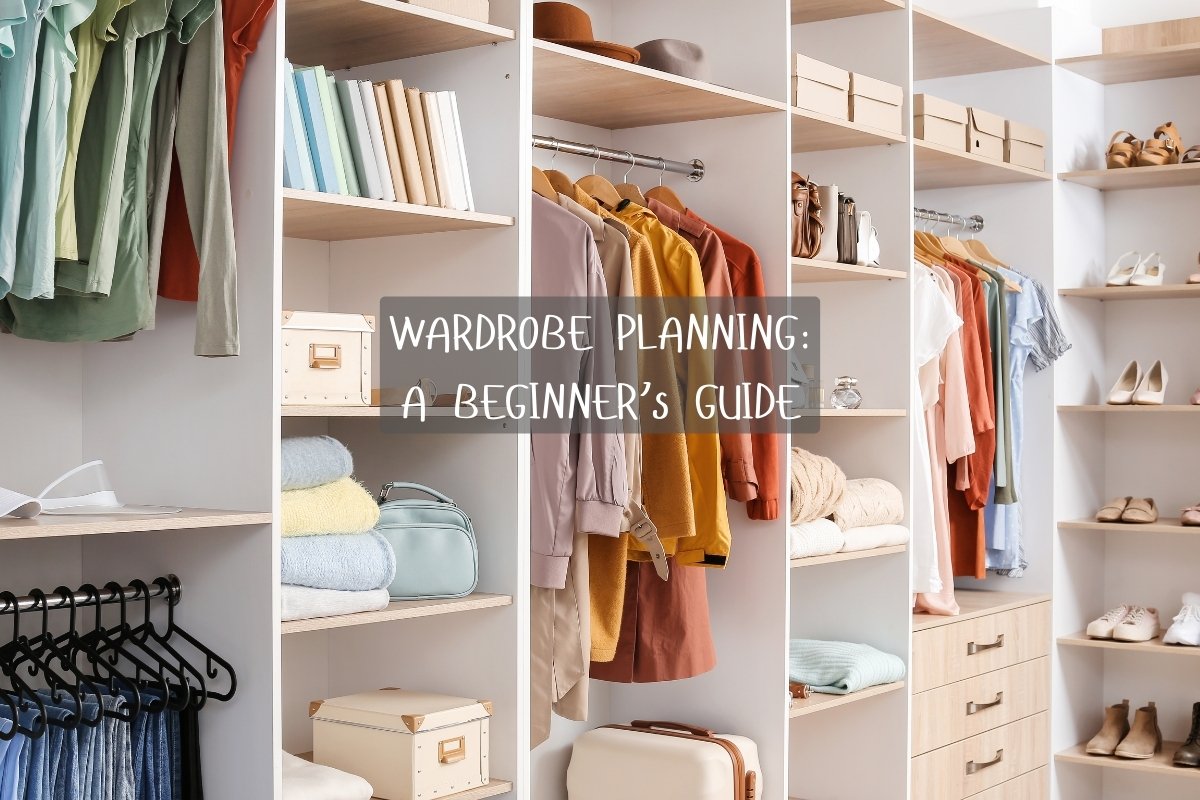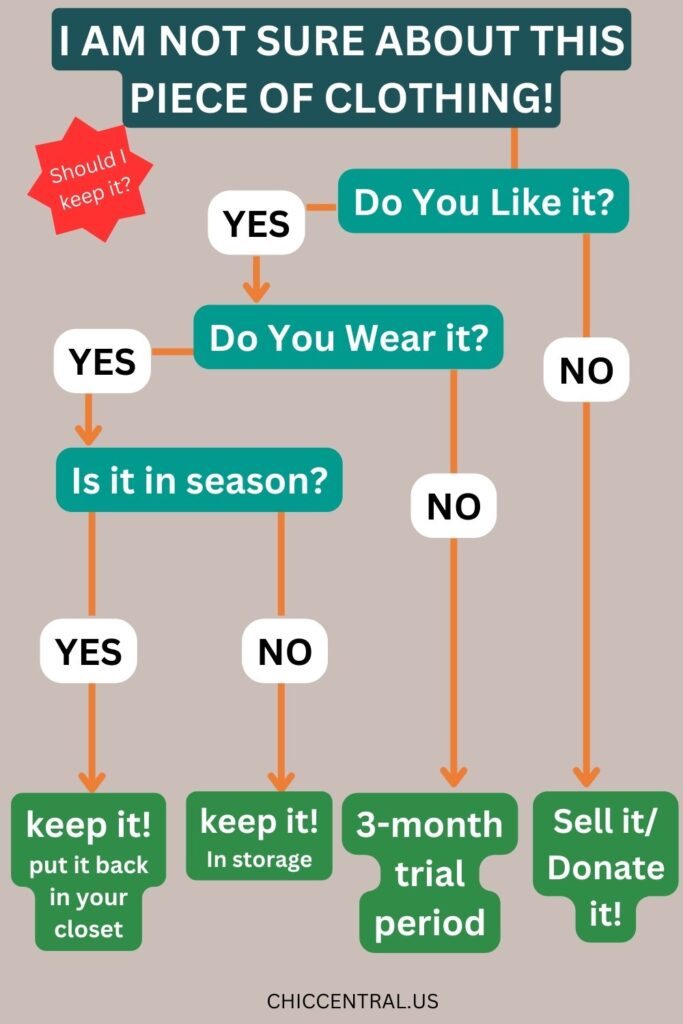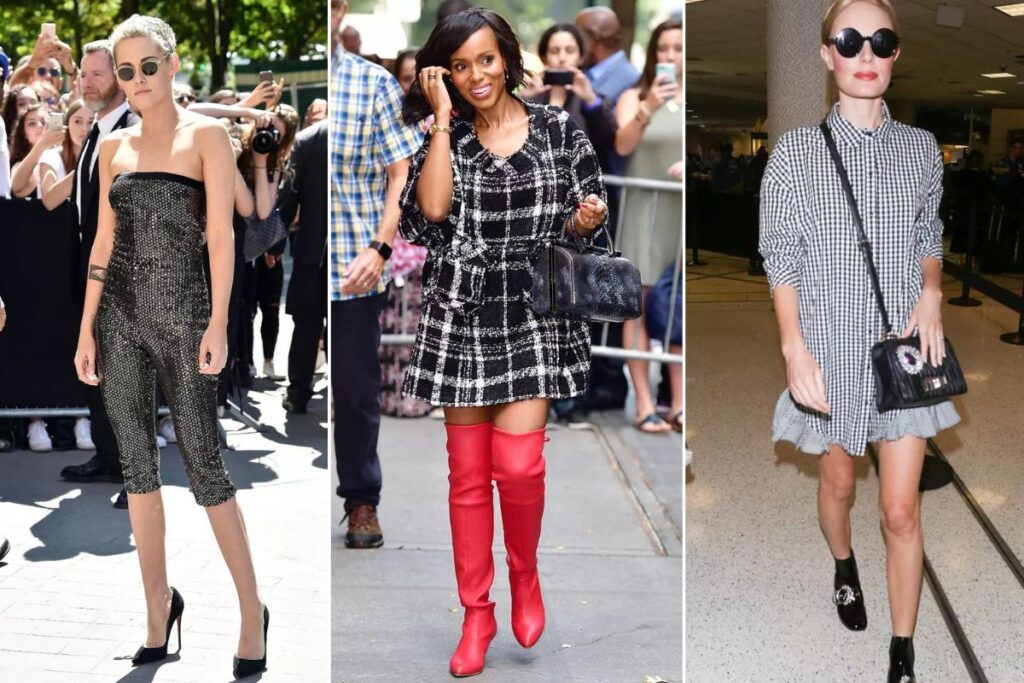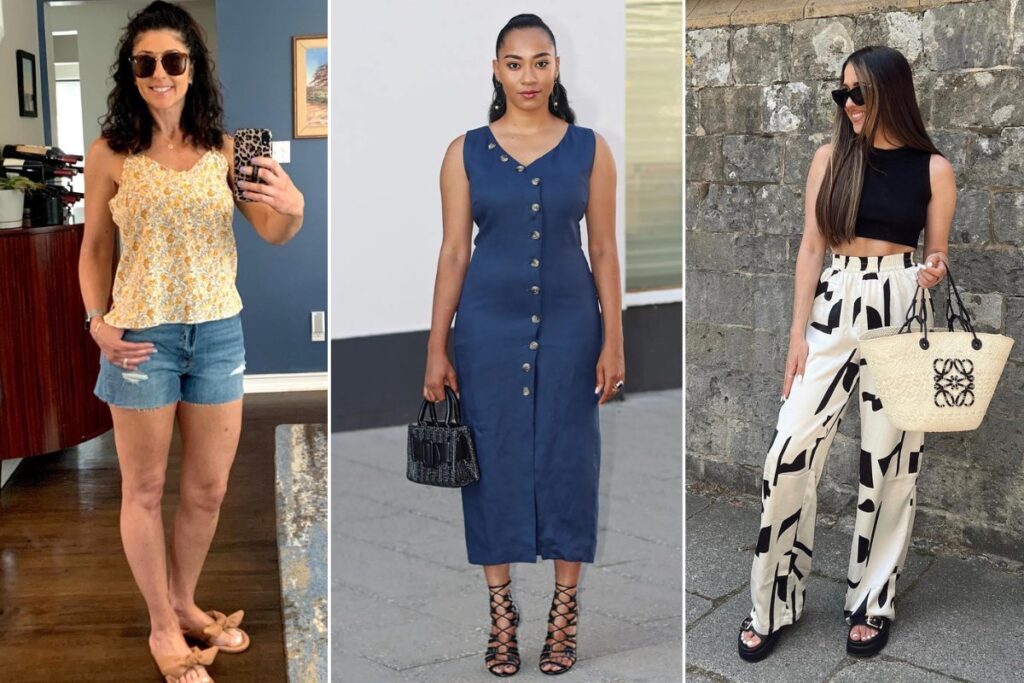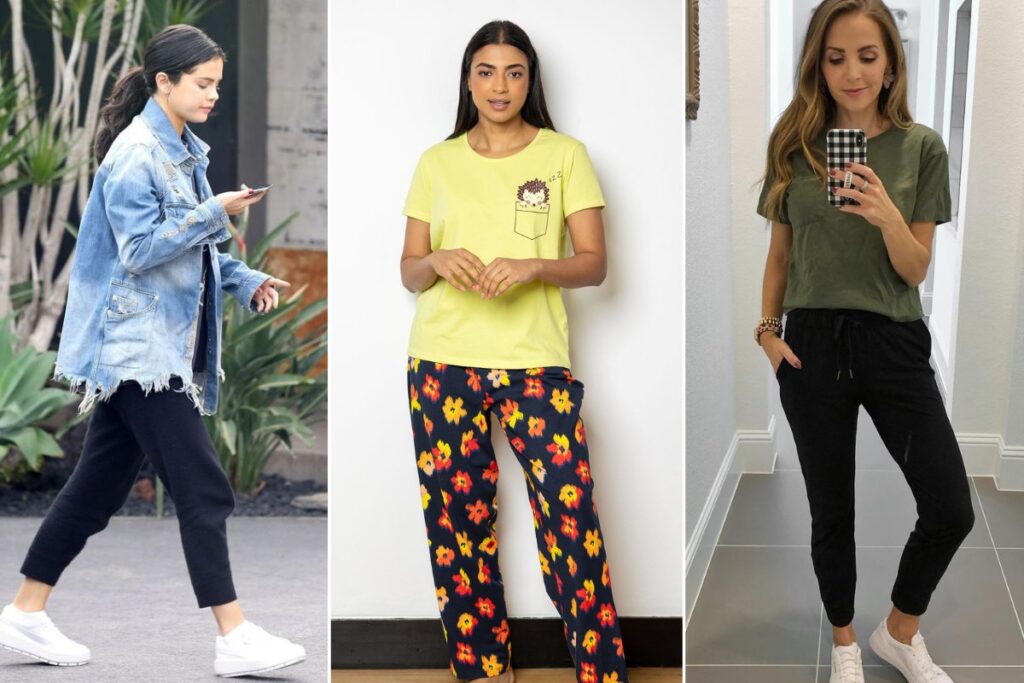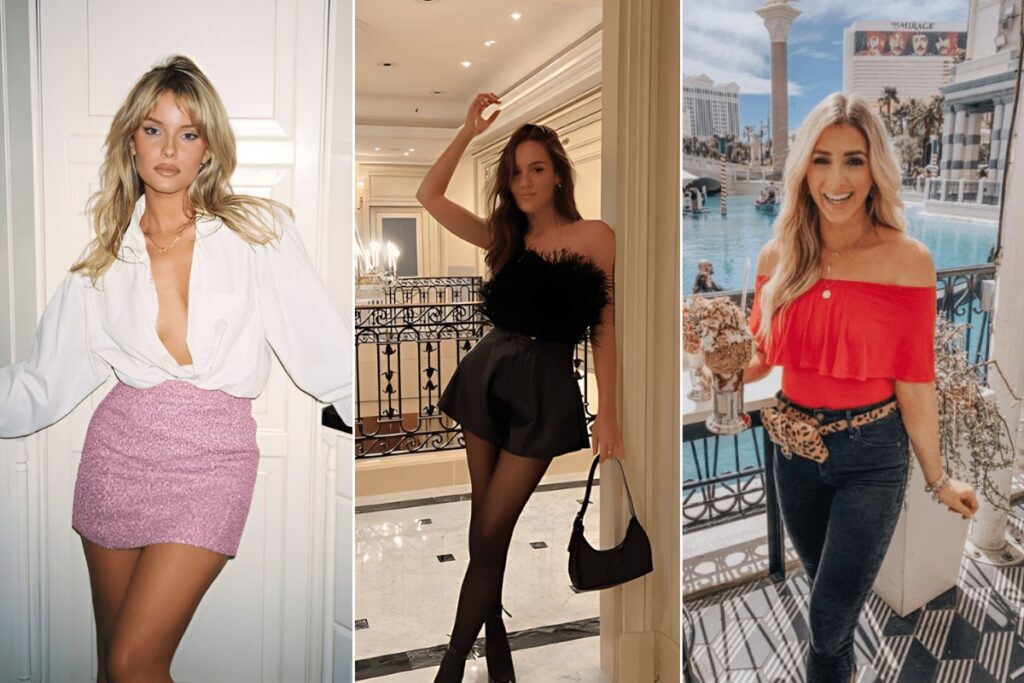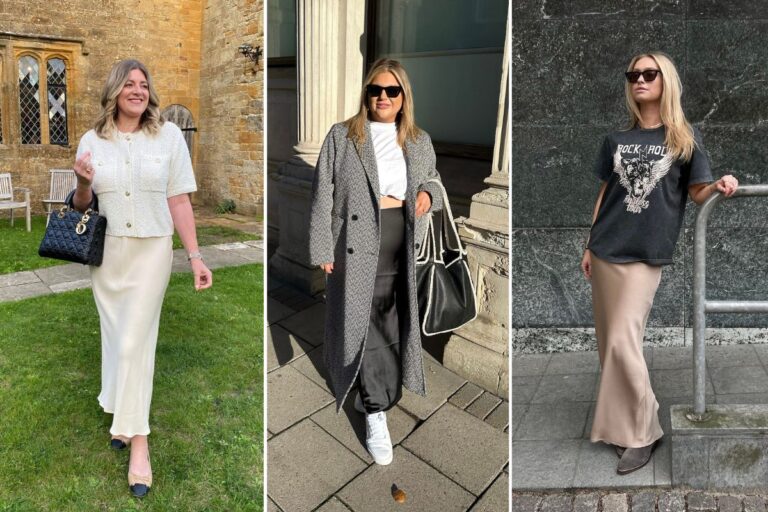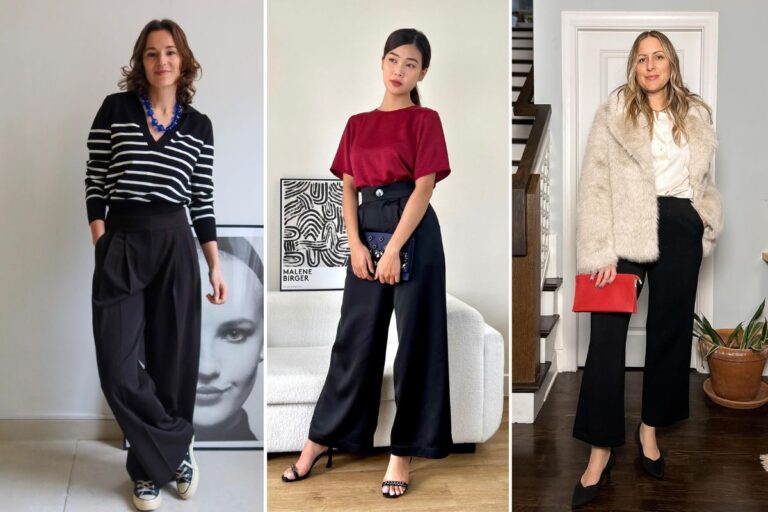I still remember the utter chaos that was my closet growing up. An explosion of random tops, bottoms, dresses, and shoes crammed onto overflowing shelves and stuffed into corners. I could never seem to find anything to wear each morning and would get so frustrated. Most days, I’d just throw on jeans and a t-shirt to avoid the whole mess.
It wasn’t until I moved away for college that I realized the power of a planned, intentional wardrobe. With limited closet space in my tiny dorm, I was forced to carefully edit down my belongings to versatile essentials that could be endlessly mixed and matched.
I loved the simplicity and order this brought to my life. Mornings were streamlined, as putting together outfits required barely any thought or effort. I also found myself wearing (and loving!) clothes purchased years prior since everything worked together. This brought a new level of confidence and personal style I’d never experienced with my chaotic high school closet.
Since then, I’ve become a huge advocate for wardrobe planning and management. I apply an intentional, minimalist approach to my closet curation and refresh pieces gradually each season. In my opinion, it has been a total game-changer!
If you resonate with any of my early wardrobe woes, this blog post is for you. Below I’ll cover all the essentials of planning your dream closet. From determining your needs to building a core wardrobe, incorporating seasonal trends, shopping secondhand, and more.
What is Wardrobe Planning?
Wardrobe planning is all about being intentional with the clothes you buy and keep in your closet. The goal is to curate a collection that truly represents your personal style and meets all your lifestyle needs, whether for work, weekends, going out or relaxing at home.
Instead of an overflowing, chaotic closet, wardrobe planning helps you build a versatile mix-and-match wardrobe full of pieces you actually want to wear.
You’ll analyze what you already own, identify any gaps, and shop purposefully for just the items you’re missing. Anything that’s ill-fitting, damaged or just not your vibe anymore gets the boot!
The benefits of taking a planned approach are pretty awesome too – saving time and money, simplifying your morning routine, participating in sustainable fashion, and most importantly, boosting your confidence by feeling amazing in everything you put on.
Signs You Need to Plan Your Wardrobe
Wondering if your closet could benefit from some planning TLC? Here are a few telltale signs it may be time to give your wardrobe a reboot:
Your closet feels disorganized and cluttered
A jam-packed closet with no visible floor or shelf space is a clear red flag. If you struggle to even move hangers around to see what you own, organization is overdue. Start fresh by removing everything and only keeping items you love.
You have difficulty putting outfits together
Do you mix and match the same 2-3 outfits while other clothes collect dust? This signals a need for more versatile core pieces and intentional outfit planning. Shop to fill gaps with coordinating essentials.
You don’t wear the majority of clothes you own
If over half your closet goes untouched for months, it may be time to edit down. Be ruthless and honest about items you never reach for. Clear out unworn pieces to make room for new favorites.
Your personal style feels undefined
Having a random mishmash of styles rather than a cohesive look can mean it’s time for a wardrobe reset. Define your style goals then curate pieces to bring that vision to life.
You impulse shop without planning
Compulsive shopping trips that leave you with yet another pair of shoes to squeeze onto the shelf indicate your wardrobe likely needs better strategy. Build a shopping list to fill defined needs rather than buying aimlessly.
If one or more of those points resonate, use it as motivation for finally organizing your closet! Even if the prospect seems daunting, just focus on taking it step-by-step.
How to Get Started with Wardrobe Planning
Ready to cultivate your dream wardrobe? Here is an overview of the key steps:
Analyze Your Lifestyle and Clothing Needs
Your wardrobe plan starts with self-assessment. What are your usual daily activities? What style of dress does your workplace require? How much variety do you need for casual wear, going out, events, travel, etc?
Consider your lifestyle needs for all seasons too. This analysis helps determine quantity and type of pieces your wardrobe requires.
I work remotely so live in casual wear and sneakers 95% of the time. But I still need business casual pieces for the occasional client meeting or networking event. My wardrobe plan balances everyday basics with flexible separates to dress up when needed.
Determine Your Body Type and Flattering Silhouettes
An often overlooked step is figuring out which cuts and styles suit your body type best. Are you a rectangle, hourglass, apple, or pear shape? What necklines, waistlines, and hemlines balance your proportions? Finding your most flattering silhouettes helps build an effortlessly stylish wardrobe.
I have an athletic pear shaped figure that looks best with off-the-shoulder or sweetheart necklines. I also love a cropped jacket to define my waist paired with a midi or ankle length bottom. Knowing these small tricks makes shopping my body type so much easier!
Identify Your Personal Style Preferences
Defining your personal style includes preferred aesthetics, color palettes, patterns, details, etc. Are you drawn to minimalist, romantic, boho, preppy, edgy or other looks? Do you stick to neutral earth tones or love bright bold hues?
Get specific about descriptive words, inspirational photos, even celebrity examples that match your style goals. This helps you make intentional fashion choices when building your wardrobe.
My personal style skews casual, laidback, and feminine. I’m a sucker for florals, ruffles, puff sleeves, and square necklines. And I tend to stick to a muted color palette of ivory, blush, and sage green.
Knowing those details guides my wardrobe curation and helps resist impulse purchases that don’t fit my vibe.
Create a Color Palette
Speaking of color, one of my top tips for effortless outfit creation is developing a color palette for your wardrobe spanning neutrals, core colors, and pops of accent hues. Building a palette allows you to easily mix and match pieces knowing colors complement each other.
I’m a huge fan of a neutral base since it’s so versatile. I start with core neutrals like white, black, gray, navy and pair those with my signature colors for that season.
One year I was really into shades of red so rocked a lot of crimson and blush pink. Keeping the neutral base constant makes it easy to update accent colors each year as trends shift!
Review Your Existing Wardrobe
Now comes the fun part…assessing everything currently in your closet! Pull out all clothing items so you can visualize your wardrobe as a whole. As you review, sort into keep, discard, and maybe piles:
Keep – Pieces you love, wear often, and fit well
Discard – Items that are worn out, damaged, ill-fitting, or no longer suit your style
Maybe – Clothes you don’t wear frequently but could envision using. Set these aside for a trial period.
Be fully honest and objective as you sort through each item while considering your style goals, lifestyle needs, and ideal wardrobe vision. If you struggle to make a decision, ask yourself questions like:
- When was the last time I wore this?
- Does it fit well and do I feel confident wearing it?
- Does it match my personal style and envisioned aesthetic?
- Do I have something similar I like better?
- Can it be easily integrated into outfits?
I’ll admit I used to cling to clothes for purely sentimental reasons despite never wearing them. But wardrobe planning taught me that unused clothes serve no purpose other than taking up precious closet space. Now I focus on keeping pieces I feel amazing in when I put them on. Anything less has to go!
Building Your Core Wardrobe
Once you’ve pared down your current closet, it’s time for the fun part – thoughtfully building up your wardrobe! Having a versatile mix of essentials and statement pieces allows you to create multiple outfits suitable for any occasion.
Essentials to Include
Tops – Focus on high quality basics like t-shirts, tanks, blouses, and button-downs in solid colors and patterns that easily mix and match.
Bottoms – Include bottoms for both dressy and casual wear like jeans, trousers, skirts, shorts, leggings. Choose versatile colors and fabrics.
Layers – Transition between seasons and activities with cardigans, blazers, jackets, kimonos, dusters.
Dresses – Add a few go-to dresses for instant outfits from maxi and midi to mini and slip.
Shoes – Shoes tailored to your lifestyle needs for work, weekends, working out, dressy events, etc. Aim for quality over quantity.
Accessories – No outfit is complete without the finishing touches! Belts, scarves, hats, jewelry and handbags.
Within those categories focus first on elevating your neutral basics collection with high quality and comfortable pieces offering great cost per wear. Then supplement with pops of color, prints, and trends keeping quantity modest.
I’m a huge fan of companies like Quince and Grana that offer affordable silk, cashmere, and 100% cotton essentials ethically produced to last for years. Their neutral basics are my wardrobe MVPs!
Create Outfit Combinations
As I mentioned earlier, my biggest wardrobe planning tip is to intentionally create outfit combinations. Treat your closet like a boutique shop pulling together complementary pieces into chic looks.
Ensure you have the foundations to make ensembles for every occasion – work, weekend, date night, travel, etc. Then have fun styling those versatile separates into fresh outfits.
Focus on quality staples over trendy statement pieces to get more mileage. A few brightly colored accessories and seasonal swap-outs keep the combinations feeling current.
I now have a mental catalogue of my go-to outfit formulas like jeans + silk cami + blazer or midi skirt + cropped sweater + booties. Getting dressed is an effortless 5 minute process even on busy mornings!
Consider Fabrics and Care
An often overlooked aspect of planning your wardrobe is considering textiles and clothing care. The fabrics you choose impact comfort, fit, longevity and sustainability.
Natural fibers like 100% cotton, linen, silk, and cashmere allow skin to breathe, provide warmth yet coolness, and last for many washes. While convenient, synthetic blends tend to pill, stretch out, and fade faster.
It’s also essential to follow garment care instructions properly. How you launder delicate fabrics makes a huge difference. I’ve ruined many a silk top by tossing it casually in the wash!
While more of an upfront investment, purchasing quality materials and learning to care for them extends the life of pieces for greater cost per wear. I now check clothing labels for materials and washing guidance right in the store before purchasing.
And if the care seems high maintenance? I happily leave those pretty but impractical pieces behind. My wardrobe contains only fabrics I can and will properly launder. No more accidental ruined favorites!
Seasonal Refresh and Rotation
Incorporating new seasonal fashion trends keeps your wardrobe feeling fresh and current. The key is maintaining that perfect balance of integrating new arrivals while still keeping your core basics at the foundation.
Here is an overview of my seasonal wardrobe refresh process:
Spring – Pack away heavier fall/winter knits, coats, and booties. Pull out lighter layers like jackets, kimonos and sweaters. Shop for new season colors and prints – I love a good floral midi skirt!
Summer – Transition out closed toe shoes and dark winter colors. Bring in breezy dresses, shorts, tanks, sandals and bright accessories. This season I’m trying out more yellows and oranges inspired by summer sunsets.
Fall – As the weather cools, rotate in cozy sweaters, leather jackets, jeans, ankle booties and rich autumnal prints. I’m loving the earthy terra-cotta and olive color trend this fall.
Winter – Out come the heavy outerwear like wool coats and snow boots along with chunky knits, thermal layers and seasonal cocktail attire. Deep berry tones and metallic accents feel perfect for the holidays.
With each seasonal shift, I do a thorough inventory and try on current pieces to note any gaps in my wardrobe. Over the years I’ve learned key staples I reliably need to stock up on year after year.
For example, I can never have enough neutral fitted tanks and cardigans to layer under dresses plus a couple updated handbags. I create an ongoing seasonal shopping checklist so I don’t over or under purchase.
And as exciting new pieces come in, I always assess which current items can retire. Making room in your closet is essential to avoid accumulating clutter.
So, with the arrival of those floral midi skirts this spring, out went 2 pairs of worn skinny jeans along with a few outdated boho dresses. Maintaining balance through ongoing curation is crucial for wardrobe harmony!
Building an Ethical and Sustainable Wardrobe
Along with refreshing my closet seasonally, I’m also committed to maintaining an ethical, sustainable approach to fashion. The fast fashion industry promotes overconsumption with poor labor practices and environmental damage.
By keeping my wardrobe curated, investing in quality over trends, and properly caring for items, I’m able to minimize unnecessary purchases. Other ethical practices I incorporate include:
Shopping Secondhand – I love thrifting and consignment shops to score unique vintage finds and combat waste. Fast fashion ends up in landfills so buying used extends the lifecycle of clothing.
Investing in Timeless Pieces – I focus my fashion budget on versatile, classic staples made to last across seasons rather than disposable trends. A crisp white button-down or Little Black Dress get repeated wear for years.
Proper Clothing Care – As mentioned earlier, I care for delicate fabrics properly and make repairs immediately to increase longevity. Stitching holes, patching jeans, polishing shoes – a little love goes a long way.
Recycling and Repurposing – Any pieces I do retire get donated, resold, or creatively repurposed before adding to landfill waste. I once upcycled an old dress into a skirt and matching scrunchie!
Ethical Brand Research – I vet brands for fair labor practices and environmental commitments before purchasing pricey investment pieces. Companies like Everlane and Reformation promote radical transparency in an often murky industry.
Building an ethical wardrobe does require more intention which aligns perfectly with the wardrobe planning mindset. I don’t expect perfection overnight but making small sustainable switches over time keeps me feeling accountable.
And honestly? Knowing I’m supporting ethical production and minimizing waste motivates me to shop secondhand and take pristine care of items I do purchase. My beloved 10 year old Frye leather boots are a testament to investing in quality!
Tips for Successful Wardrobe Planning
Curating your dream closet requires vision, commitment and a methodical approach. But the payoff is priceless – an organized wardrobe full of pieces you adore wearing every day!
Here are my top tips for wardrobe planning success:
Start with a Vision – Define your ideal aesthetic then use that vision to guide every decision from keeping, discarding and purchasing items. Remind yourself how the end result will feel.
Take it Slowly – Don’t attempt to overhaul your entire wardrobe overnight! Set a realistic timeline for tackling sections piece by piece. Consistency is key.
Use Tools to Track Progress – Wardrobe organization apps like Finery help catalogue what you own, schedule seasonal changeovers, wish list missing pieces and create outfit combos digitally.
Stick to a Budget – Determine how much you can reasonably invest in your wardrobe overhaul or seasonal refresh. Having financial guardrails helps prioritize essentials over wants.
Edit Continuously – Wardrobe curation is never complete! Revisit what you own before each new season and shop with intention. Continuously ask if pieces still fit your vision.
